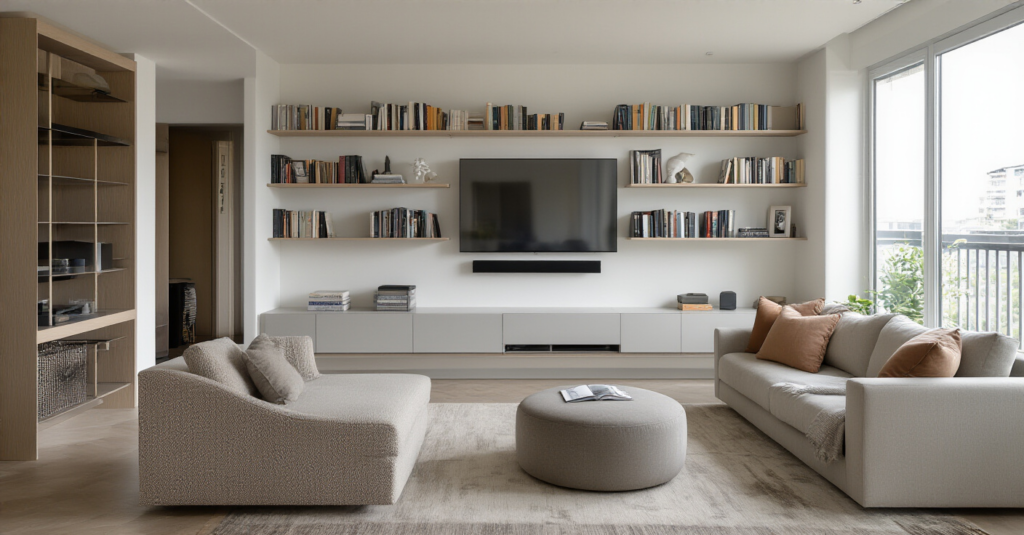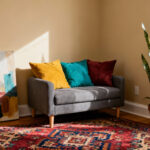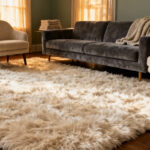Can we talk about the saddest thing I see? It’s the person who moves into a new apartment, full of excitement, and then… nothing. A year later, it’s still the same beige box with the same generic furniture because they’re paralyzed. They think decorating is this huge, permanent, expensive thing. Or worse, they think because it’s a rental, it can’t truly feel like home. That is my biggest pet peeve. Your home isn’t supposed to be a museum that’s finished and perfect. It’s your partner-in-crime for life’s moments! It should be a place that changes with the seasons, celebrates your day, and gets you excited for what’s next.
What everyone gets wrong is thinking that small-space decorating is about optical illusions and making things look bigger. That’s just noise. What actually matters is making your space feel alive, functional, and deeply, wonderfully you. It’s about creating a backdrop for movie nights, cozy mornings, and impromptu get-togethers. I learned this the hard way when I styled my first tiny studio. I bought all this “small scale” furniture and it just looked like a dollhouse. It had no soul! The secret isn’t about shrinking everything; it’s about being clever, personal, and seeing every season as a new excuse to play. Let’s get into the good stuff you wish you’d known sooner.
Laying the Groundwork: Apartment Living Room Essentials (Part 1)
Before you even think about throw pillows, we need to talk foundations. This is the part everyone wants to skip, but I promise, getting this right makes all the fun stuff a million times easier. Think of it as stretching before a dance class—it prevents you from pulling a muscle (or buying a sofa that doesn’t fit through your front door).
1. Assess Your Apartment’s Unique Layout and Restrictions
Okay, real talk. Before you fall in love with a giant velvet sectional on Pinterest, you have to get intimate with your actual space. Grab a tape measure—your new best friend—and measure everything. Walls, windows, that weird radiator in the corner. Sketch it out. I know, it sounds like homework, but this is the five minutes of “work” that will save you hours of frustration and hundreds of dollars. This is how you avoid the soul-crushing moment of realizing the media console you ordered completely blocks the only convenient outlet.
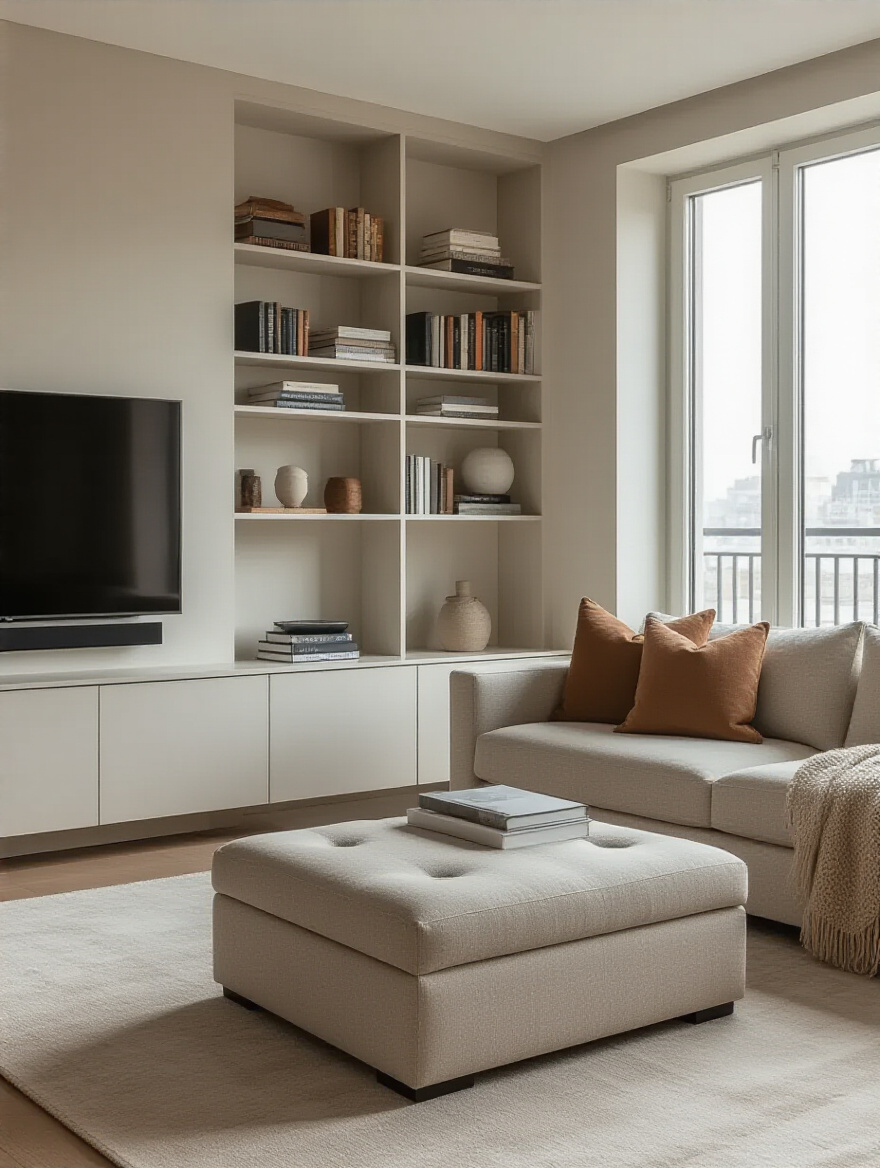
Then, the even more boring part: read your lease. Seriously. Knowing you can’t drill holes before you buy a 70-pound floating shelf system is a game-changer. But don’t see these restrictions as a buzzkill! See them as creative challenges. Can’t paint? Amazing, let’s explore temporary wallpaper or a giant, colorful piece of art. The goal isn’t just to make things fit; it’s to understand the sandbox you get to play in.
This first step is your strategic map. Once you have it, you can navigate your design journey with confidence, knowing every piece you choose will have a perfect home.
2. Define Your Personal Style Vision with Mood Boards and Inspiration
You know what people always ask me? “How do I find my style?” My answer is always the same: stop thinking and start collecting! This is your official permission slip to get lost on Pinterest, tear pages out of magazines, and screen-grab Instagram posts. A mood board is not some fussy designer thing; it’s your visual north star. It’s the difference between a room that feels like a cohesive, beautiful story and one that feels like a garage sale of things you kinda liked.
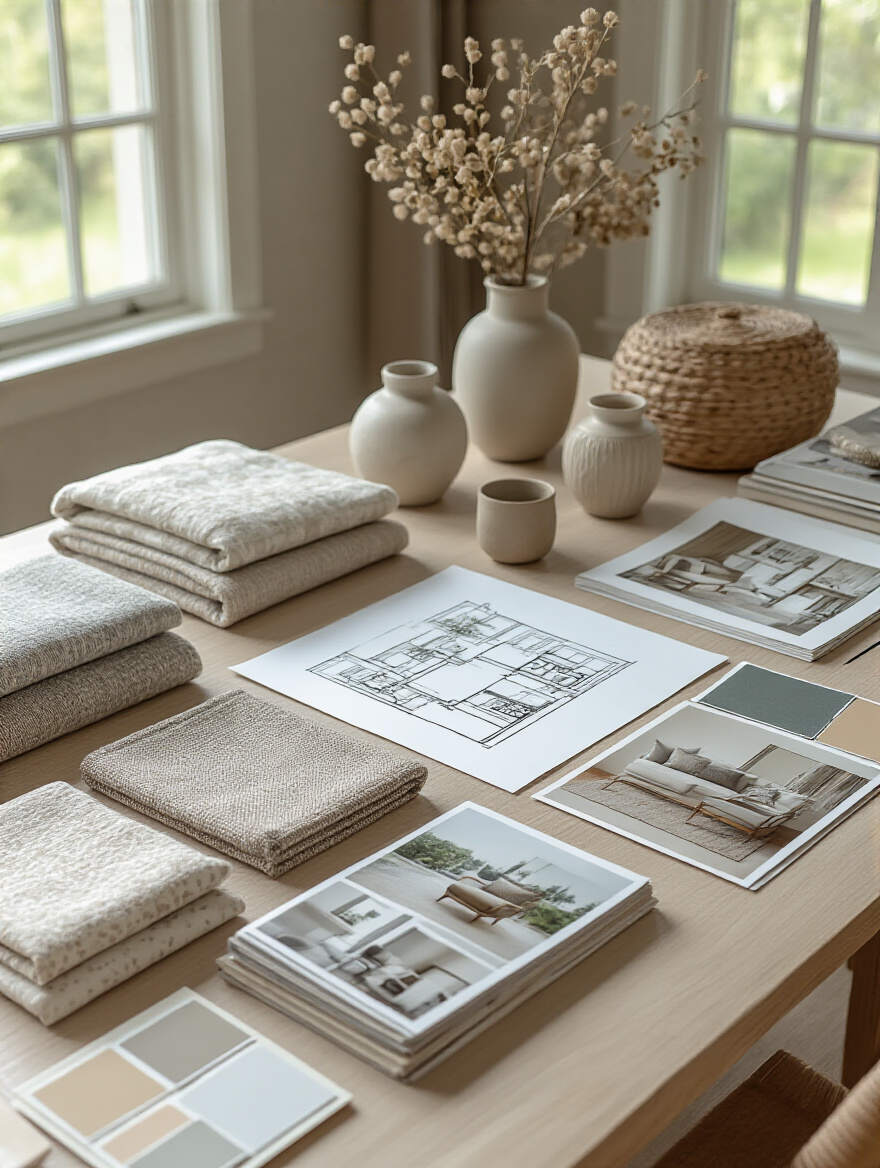
Start by gathering anything that makes your heart sing. Don’t judge it, just collect it. Maybe it’s the color of a moody landscape painting, the texture of a chunky knit sweater, or the vibe of a Parisian cafe. Once you have a big collection, start looking for patterns. Are you drawn to clean lines? Warm woods? Bold jewel tones? This is where your personal style starts to emerge from the noise. Your mood board becomes the filter for every decision, quietly asking, “Does this fit the vibe?” It’s the easiest shortcut to a home that feels intentionally and beautifully you.
This vision board acts as your guide, ensuring that everything from your sofa to your coasters works together to create the exact feeling you want to come home to every day.
3. Prioritize Functionality: Embrace Multipurpose Furniture for Small Spaces
In an apartment, every single piece of furniture needs to earn its spot. That clunky coffee table that just holds mail? Fired. It’s time to hire hardworking, multitasking pieces that do more than just sit there. Think of your furniture as a team of clever assistants working to make your life easier and your space bigger. This is the secret weapon for anyone who feels like they’re bursting at the seams. It’s not about having less stuff; it’s about having smarter stuff.
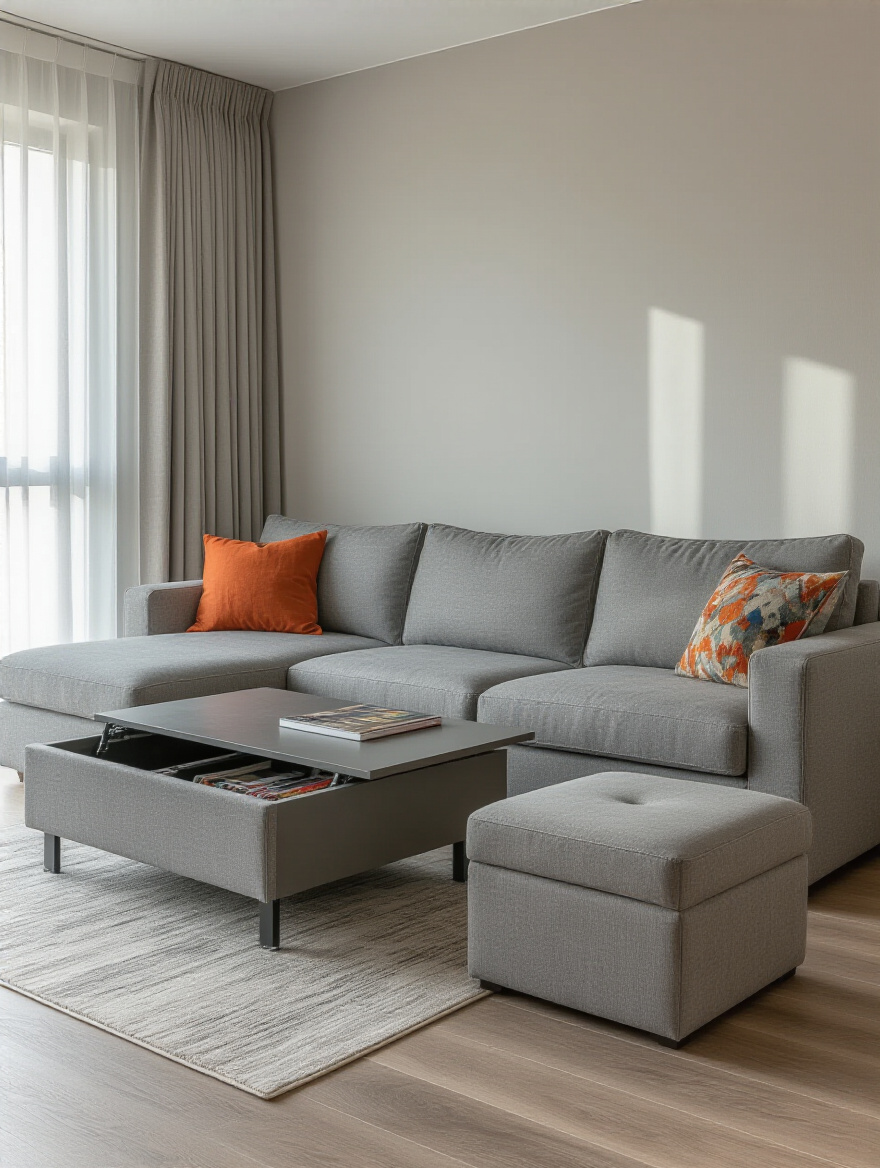
A storage ottoman is my go-to. It’s a footrest, extra seating for a party, and the perfect hiding spot for those cozy blankets you love but don’t always want on display. A lift-top coffee table? Suddenly you have a comfortable desk for work-from-home days or a dining table for movie night pizza. I once helped a client in a tiny studio swap his bulky desk for a sleek console table that expanded to seat six for dinner. He went from feeling cramped to being the go-to host for his friend group, all thanks to one smart piece of furniture.
Look for furniture that can pull double or even triple duty, and you’ll find your small living room suddenly has endless possibilities hidden within its walls.
4. Master the Art of Smart Storage Solutions to Maximize Every Inch
Let’s be honest, clutter is the number one enemy of a peaceful home. But telling you to “declutter” isn’t the whole story. The real secret is creating clever, invisible storage so your things have a home that isn’t your floor or coffee table. And the biggest shortcut? Look up! Most people live in the bottom half of their rooms, totally ignoring all that glorious vertical real estate. Tall, slender bookcases draw the eye upward, making ceilings feel higher, while providing tons of space for books and treasures.
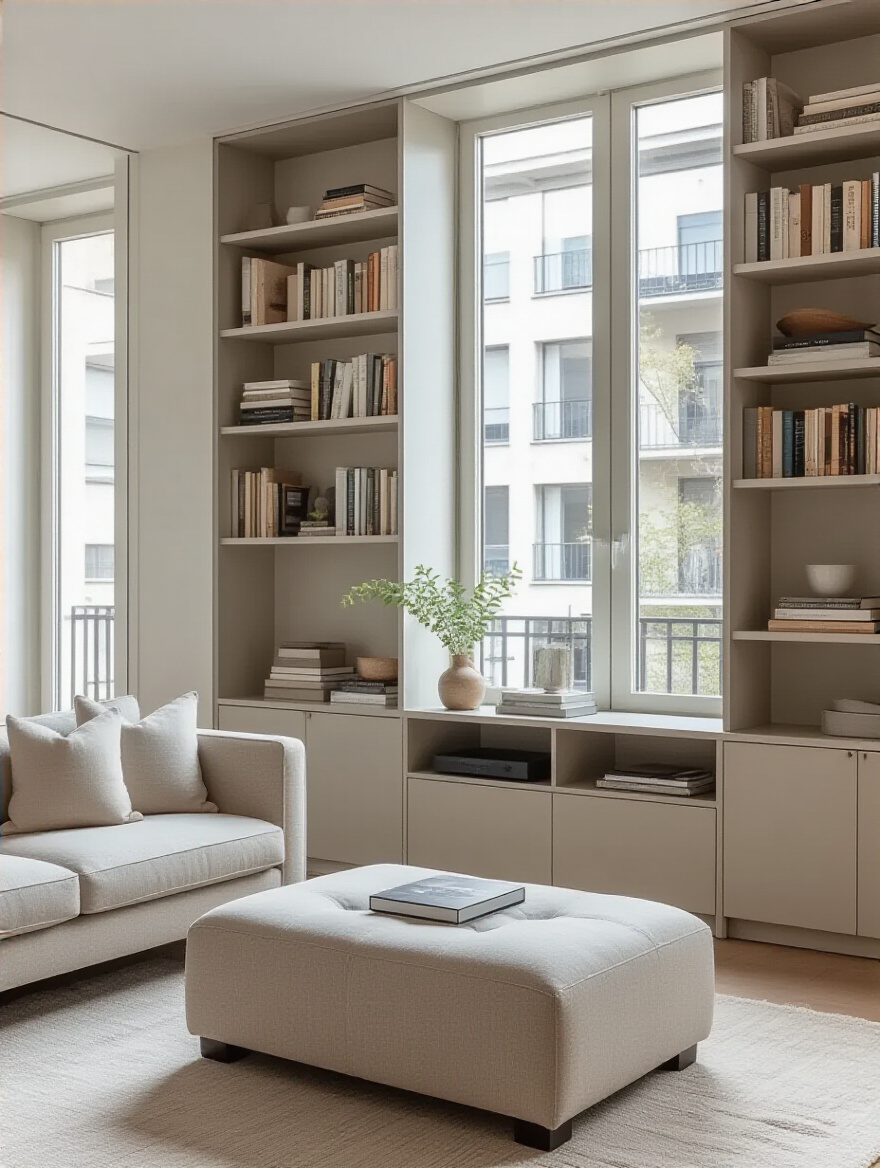
Floating shelves are another magical solution. They give you display space without taking up a single inch of floor, making the room feel way more open and airy. Don’t forget the forgotten spaces, either. That awkward gap next to your sofa? Perfect for a slim rolling cart. The space under your bed? Ideal for bins with out-of-season decor. My event planning background taught me that organization is the key to making any space feel bigger and more luxurious.
“Every item should have a home. If it doesn’t, it either needs a new home or it needs to leave your apartment.”
By making your walls and hidden corners work harder, you free up your living space to be just that—a space for living.
Laying the Groundwork: Apartment Living Room Essentials (Part 2)
Okay, now that we’ve covered the physical space, let’s talk about two more foundational pieces: money and mood. Getting these right from the start is what separates a frustrating project from a joyful one. Think of this as setting the tone for the entire performance.
5. Establish a Realistic Budget to Guide Your Decor Purchases
Let’s talk money. I know, it’s not the sexiest part of decorating, but trust me, nothing kills a creative vibe faster than financial stress. A budget isn’t a creative leash; it’s a treasure map that guides you to make smart decisions. It’s what empowers you to decide where to splurge (hello, dreamy sofa you’ll have for years!) and where to save (hey there, fantastic thrifted side table that just needs a coat of paint!).
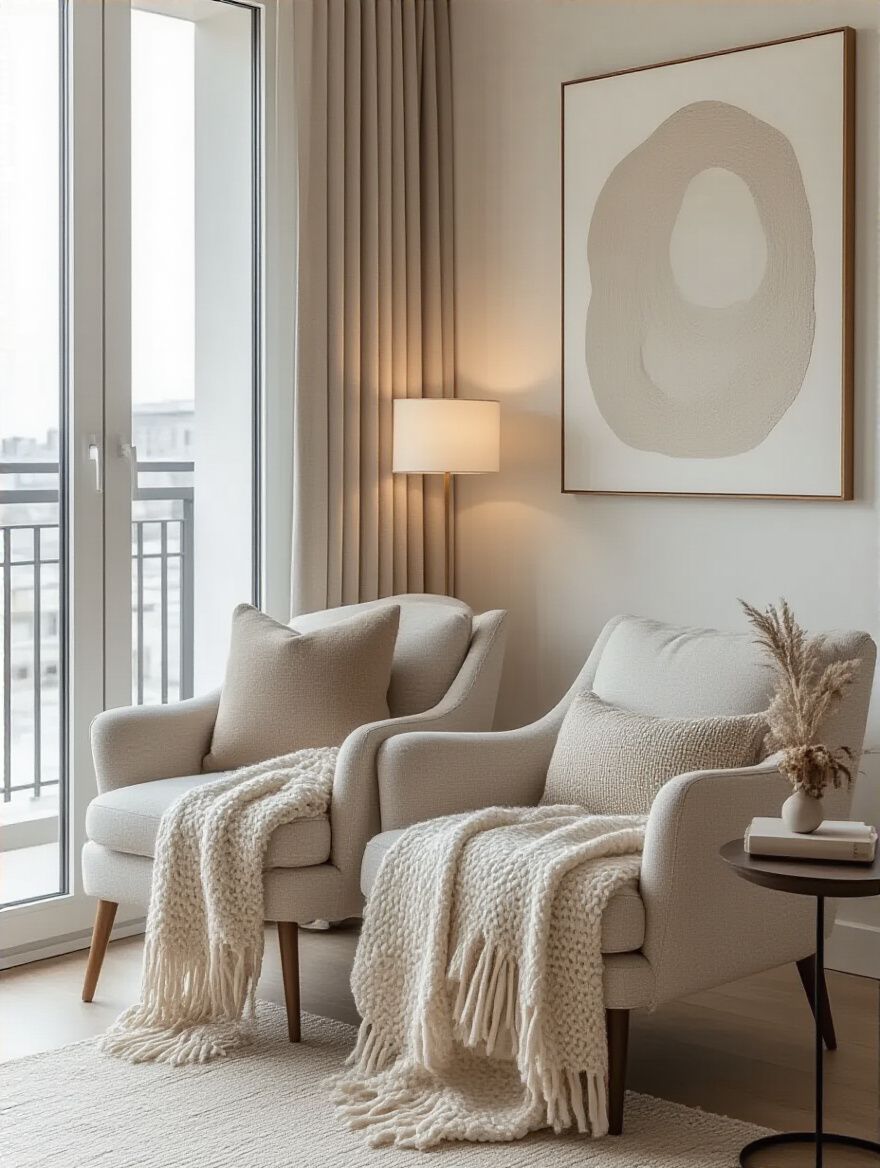
The biggest BS everyone says is that you need a huge budget to have a beautiful home. Not true. You just need a plan. Figure out what you can spend, then break it down. I tell my clients to allocate the biggest chunk to the pieces that get the most use—your sofa, maybe a comfortable armchair. These are your investment pieces. Then, have fun getting creative with the rest! DIY art, secondhand finds, and seasonal swaps for things like pillows are where you can get a huge impact for very little money.
A clear budget removes the guesswork and guilt, letting you focus on the fun part: bringing your vision to life without waking up in a cold sweat.
6. Select a Cohesive Color Palette for Visual Flow and Harmony
Color is the emotional language of a room. It’s the fastest way to set a mood, whether you want your living room to feel calm and serene or vibrant and energetic. But throwing a bunch of colors you like into one room can quickly turn into visual chaos. The shortcut pros use is the “60-30-10 Rule,” and it’s so simple. 60% of your room should be a dominant color (usually your walls and large furniture), 30% a secondary color (drapes, accent chairs, rugs), and 10% is your accent color (throw pillows, art, accessories).
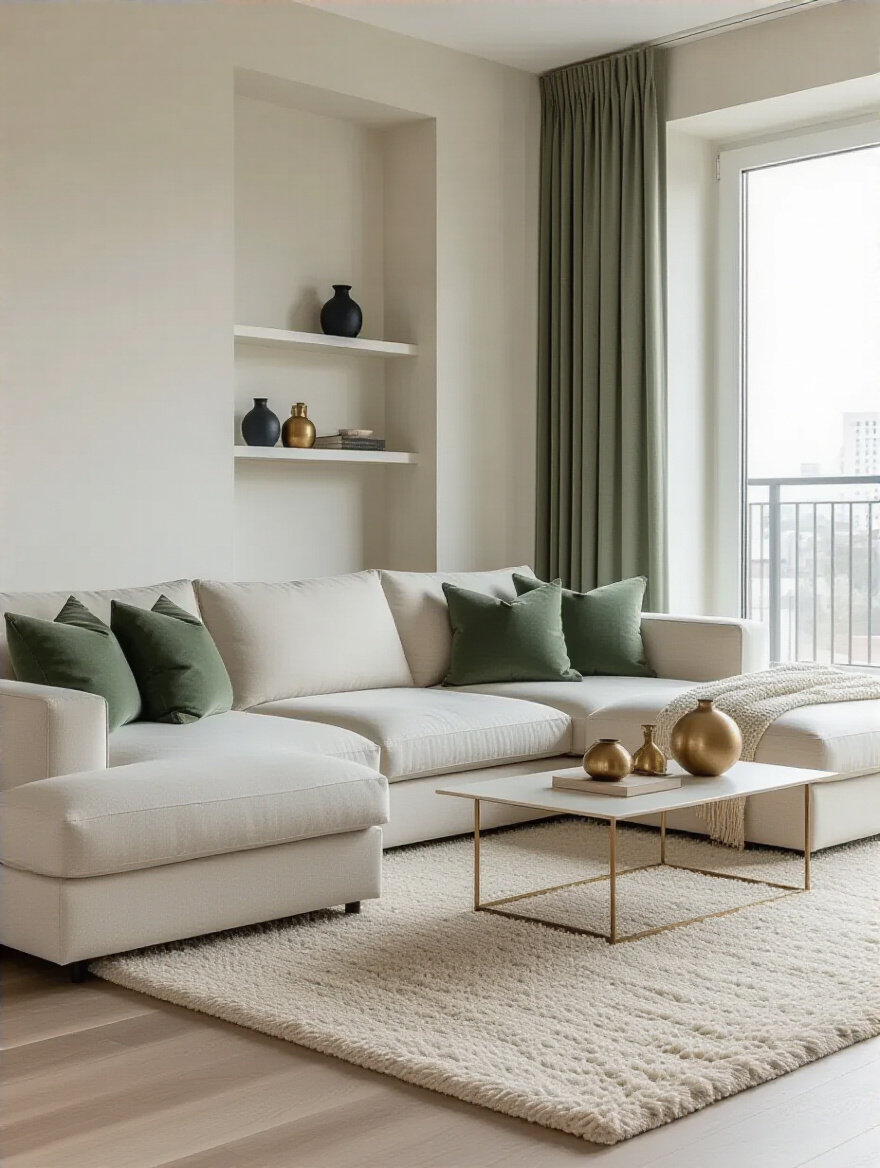
This simple formula creates a balanced, harmonious look that always feels intentional and pulled-together. And a confession: I used to think neutrals were boring. I was so wrong. A beautiful, layered neutral palette—think creams, beiges, warm grays, and whites—is the perfect canvas. It makes a small space feel incredibly open and airy, and it’s the perfect backdrop for letting your seasonal decor shine. You can introduce pops of mustard yellow and deep orange in the fall, then swap for icy blues and silver in the winter.
Your color palette is the foundation of your room’s vibe, and with a simple plan, you can create a space that feels both cohesive and wonderfully dynamic.
Strategic Selection: Furnishing Your Apartment Living Room (Part 1)
Now for the main event: the furniture! This is where your space really starts to take shape. The key here isn’t to just fill the room, but to choose pieces strategically that enhance both the look and the function of your apartment living room.
7. Invest in Right-Sized Seating for Optimal Comfort and Scale
Here’s a contradiction: to make a small room feel bigger, you sometimes need a bigger sofa. People often buy dinky, apartment-sized furniture, and all it does is make the room feel cluttered with a bunch of tiny pieces. The key isn’t just about the footprint; it’s about the “visual weight.” A sofa with clean lines and legs that lift it off the floor will feel a thousand times lighter and more spacious than a chunky, skirted one, even if they have the same dimensions.
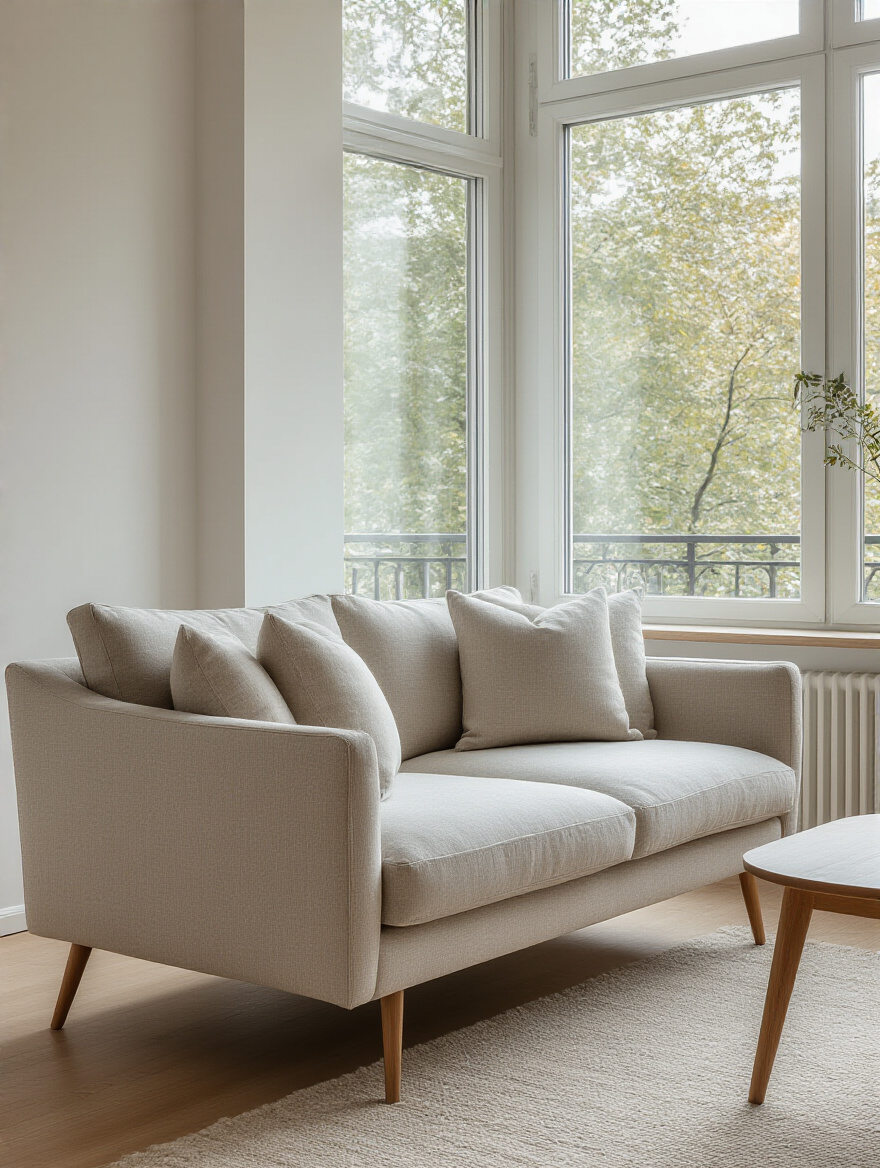
When choosing your seating, think about how you truly live. Are you a lounger who needs a deep, cozy sofa for movie marathons? Or do you entertain a lot and need a more upright sofa paired with a flexible armchair? Don’t just buy what a catalog tells you to. Your main seating is your biggest investment, so make sure it fits both your space and your lifestyle. Always remember to tape out the dimensions on your floor before you buy. It’s a simple trick that will give you a real sense of scale and prevent any costly “it looked smaller online” mistakes.
Choosing seating that’s scaled to your room and your life is the single most important step in creating a comfortable and visually balanced space.
8. Illuminate Your Space with Layered Lighting for Ambiance and Function
Coming from the world of event planning, I can tell you this with 100% certainty: lighting is everything. It sets the mood, it creates the vibe, it’s the secret ingredient that makes a space feel magical. Relying on that one sad, harsh overhead light that came with your apartment is a cardinal sin of decorating. To create a warm, inviting space, you need to think in layers: ambient, task, and accent lighting.
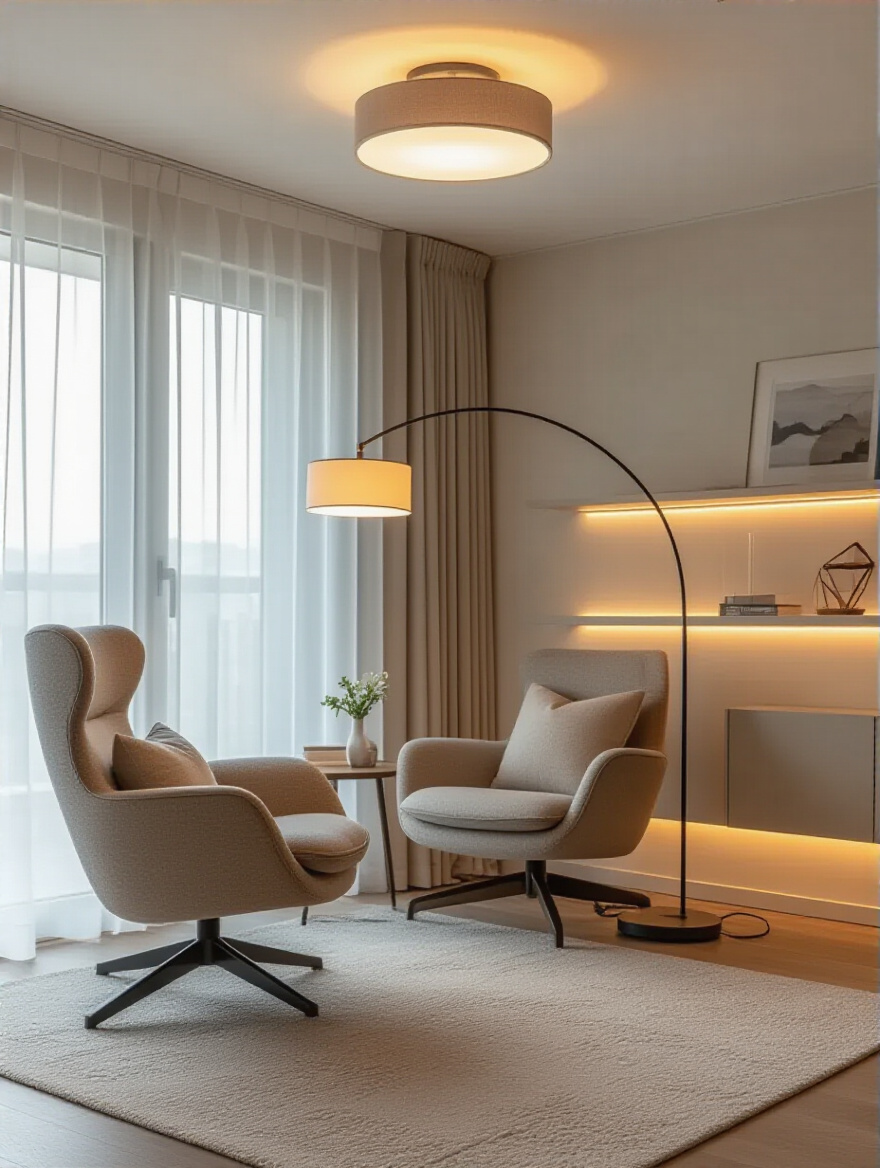
Ambient is your overall glow—that harsh overhead light can be replaced with a beautiful flush mount on a dimmer switch. Task lighting is for specific activities, like a floor lamp next to your favorite reading chair. And accent lighting is the sparkle—a small lamp on a console table, or even some candles, that add warmth and dimension. The goal is to have multiple light sources you can control, allowing you to go from bright and functional for cleaning day to low and moody for a cozy night in. I tell every client that having lamps at different heights is the fastest way to make a room feel more expensive and thoughtfully designed.
Never underestimate the power of good lighting. It’s the easiest and most impactful way to completely transform the feel of your room without moving a single piece of furniture.
9. Ground Your Design with an Appropriately Sized Area Rug
My number one decorating pet peeve? The “postage stamp” rug. You know the one—a tiny little rug floating in the middle of the room with all the furniture huddled around it like it’s a campfire. An undersized rug actually makes a room look smaller and more disjointed. Your area rug is the anchor of the room; it’s what defines the conversation area and pulls everything together into a cohesive whole.
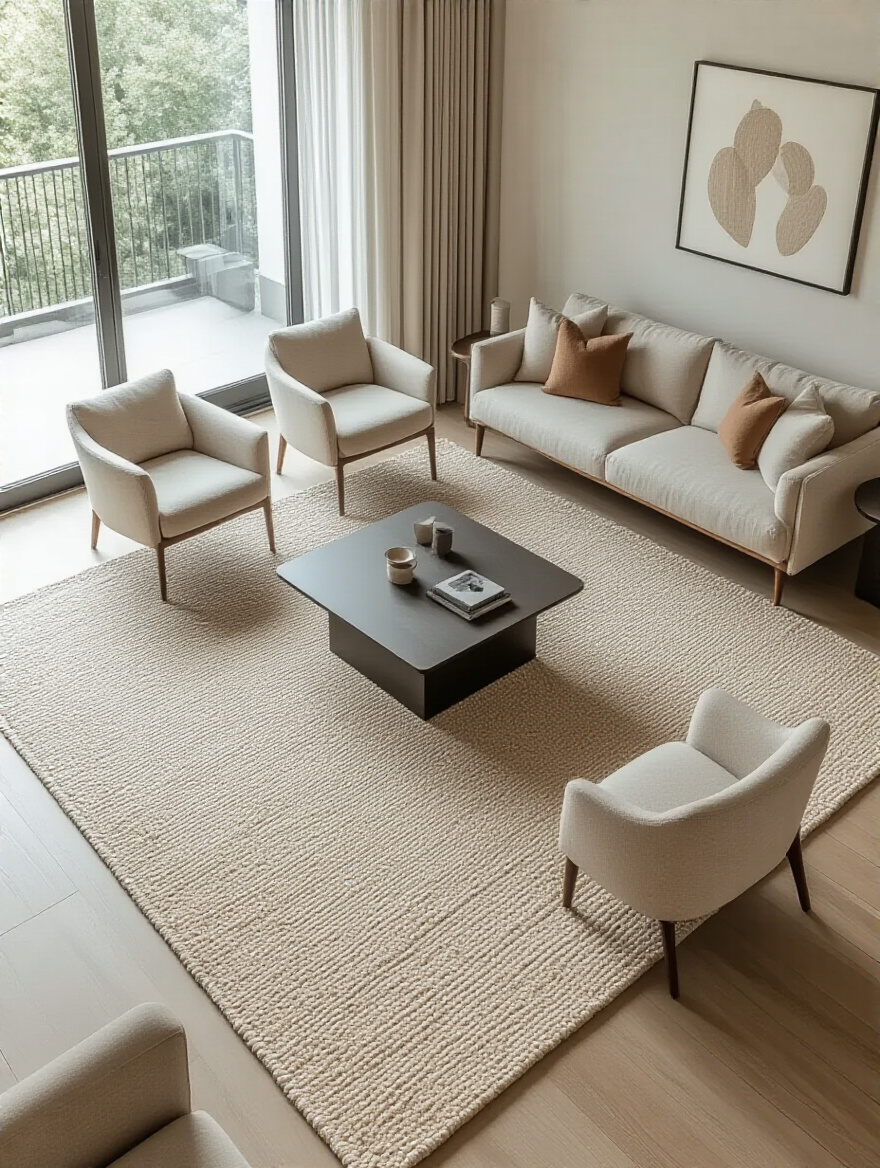
Here’s the only rule you need to remember: at least the front two legs of your sofa and any armchairs should be sitting comfortably on the rug. That’s it! This one little trick instantly makes the space feel larger, more grounded, and more luxurious. If you’re on a budget, a great shortcut is to buy a large, inexpensive natural fiber rug (like jute or sisal) to get the right footprint, and then layer a smaller, plusher, more colorful rug on top. You get the scale you need plus an extra dose of texture and personality.
A properly sized rug is the visual hug that your living room needs, pulling all the individual pieces together into one happy family.
10. Incorporate Verticality with Tall Bookcases and Wall-Mounted Shelving
We’ve talked about using your vertical space for storage, but let’s talk about it as a pure design move. Drawing the eye upward is one of the oldest tricks in the book for making a space feel grander and more expansive. Tall, slender bookcases or ladder shelves create strong vertical lines that give the illusion of higher ceilings. They add architectural interest to a plain, boxy room and give you a fabulous stage to show off your personality.
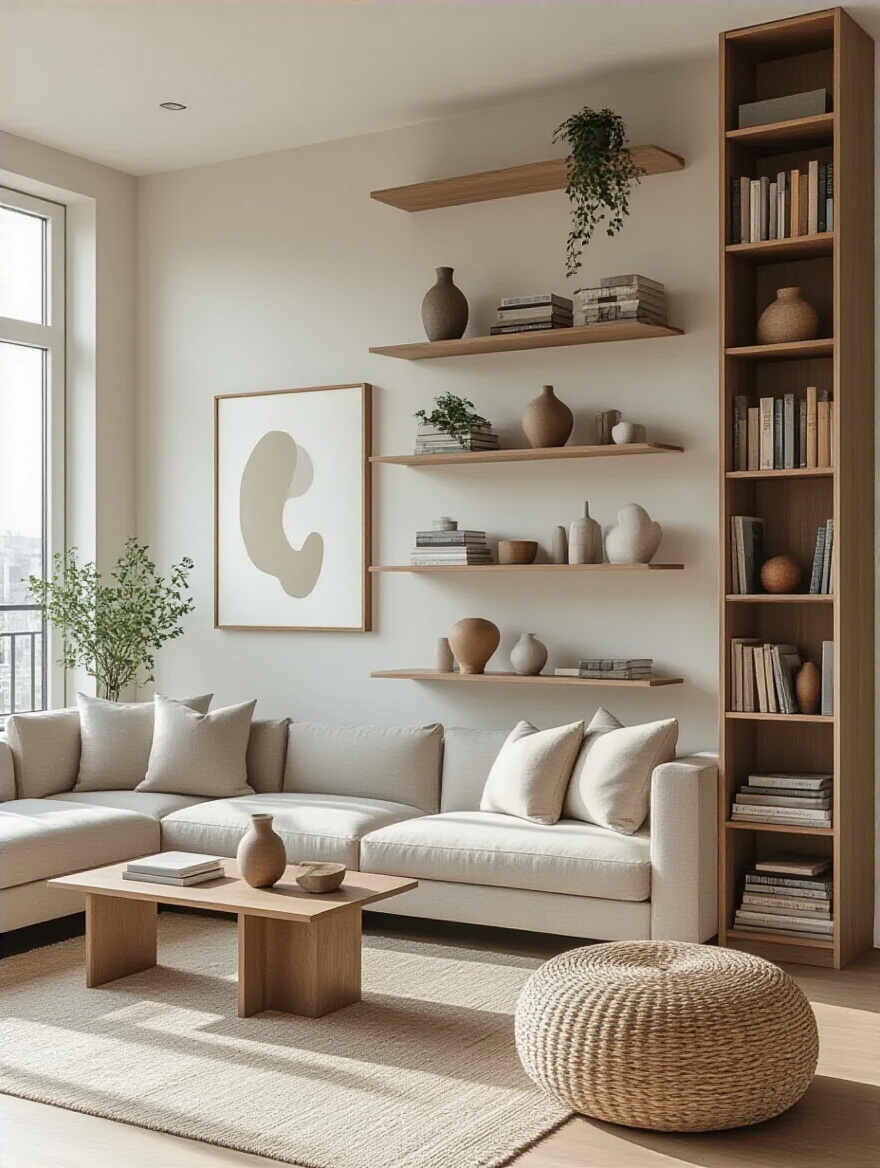
Wall-mounted or floating shelves are another hero piece, especially above a sofa or a media console. They provide a place for art, plants, and your favorite objects without taking up any precious floor space. This is your chance to curate a “shelfie” moment that tells a story about who you are. The key is to not overcrowd them. Remember to leave some breathing room—that negative space is just as important as the objects themselves for creating a look that feels stylish and curated, not cluttered.
Using your walls to create height and interest is a smart, sophisticated way to add both style and function, making your apartment feel custom and thoughtfully designed.
Strategic Selection: Furnishing Your Apartment Living Room (Part 2)
We’re moving beyond the big foundational pieces now. This next set of strategies is all about adding flexibility, light, and that extra layer of cleverness that will make your apartment living room truly shine. These are the details that elevate a space from just “furnished” to “well-designed.”
11. Choose Lightweight and Movable Furniture for Layout Flexibility
Your living room shouldn’t be a static museum display. It should be able to adapt to your life! Need to clear space for a yoga session? Hosting a game night? Want to pull a chair closer to the window to read in the afternoon sun? Choosing lightweight and movable furniture gives you the freedom to make your space work for you, moment to moment. This is about making your home a dynamic partner, not a rigid box.
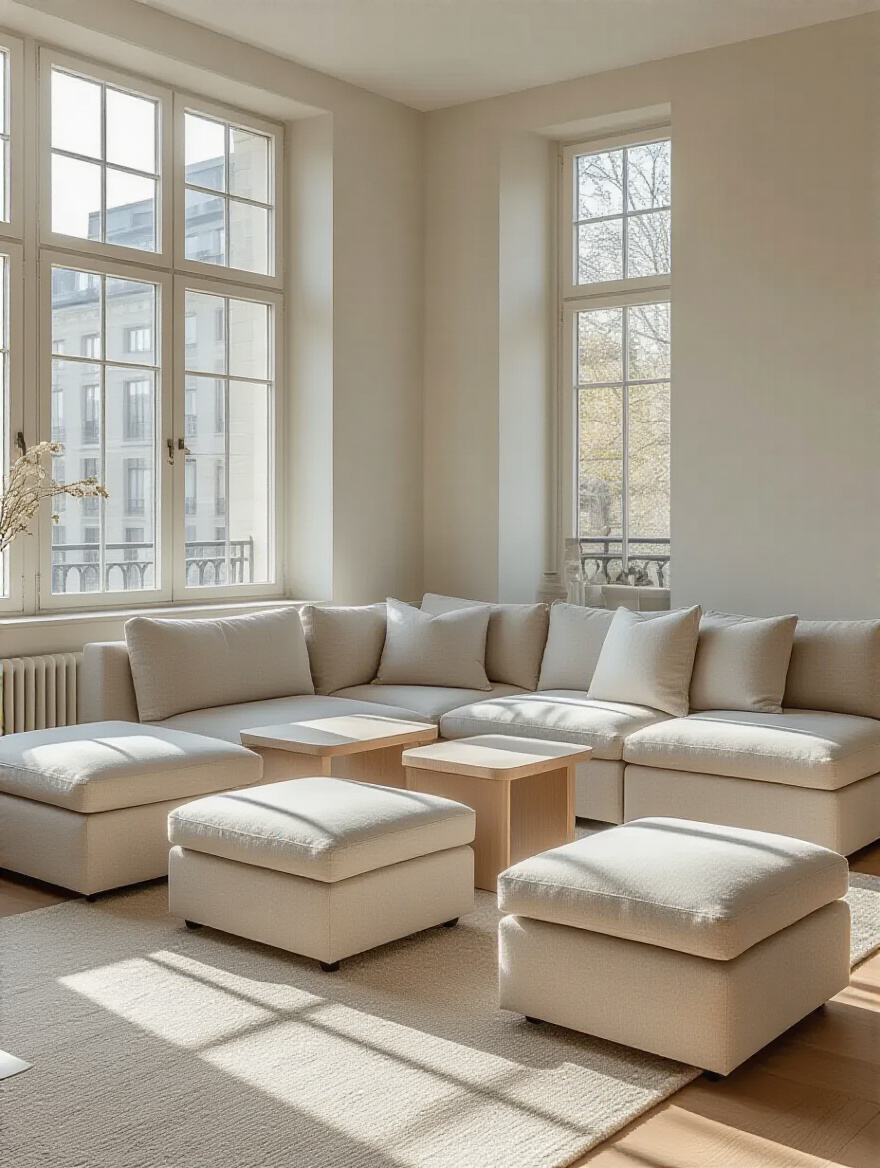
Look for coffee tables on casters, nesting side tables that can be pulled apart or tucked away, and lightweight armchairs that are easy to reposition. I once worked with a client who loved to host, but her living room felt cramped. We swapped her heavy, traditional coffee table for two smaller ottomans. Pushed together, they were a perfect coffee table. Pulled apart, they became extra seating for guests. This small change completely revolutionized how she used her space.
Think of your layout as a suggestion, not a rule. With flexible furniture, your living room can have as many different personalities as you do.
12. Leverage Mirrors to Expand Visual Space and Boost Natural Light
Okay, everyone says “use mirrors to make a room look bigger.” But here’s the BS they don’t tell you: where you put the mirror matters more than the mirror itself. A mirror is a multiplier—it will amplify whatever it reflects. Placing a mirror opposite a window is genius; it will bounce natural light all around the room and basically act as a second window. But placing a mirror where it reflects your cluttered desk? That’s just a high-definition picture of your stress.
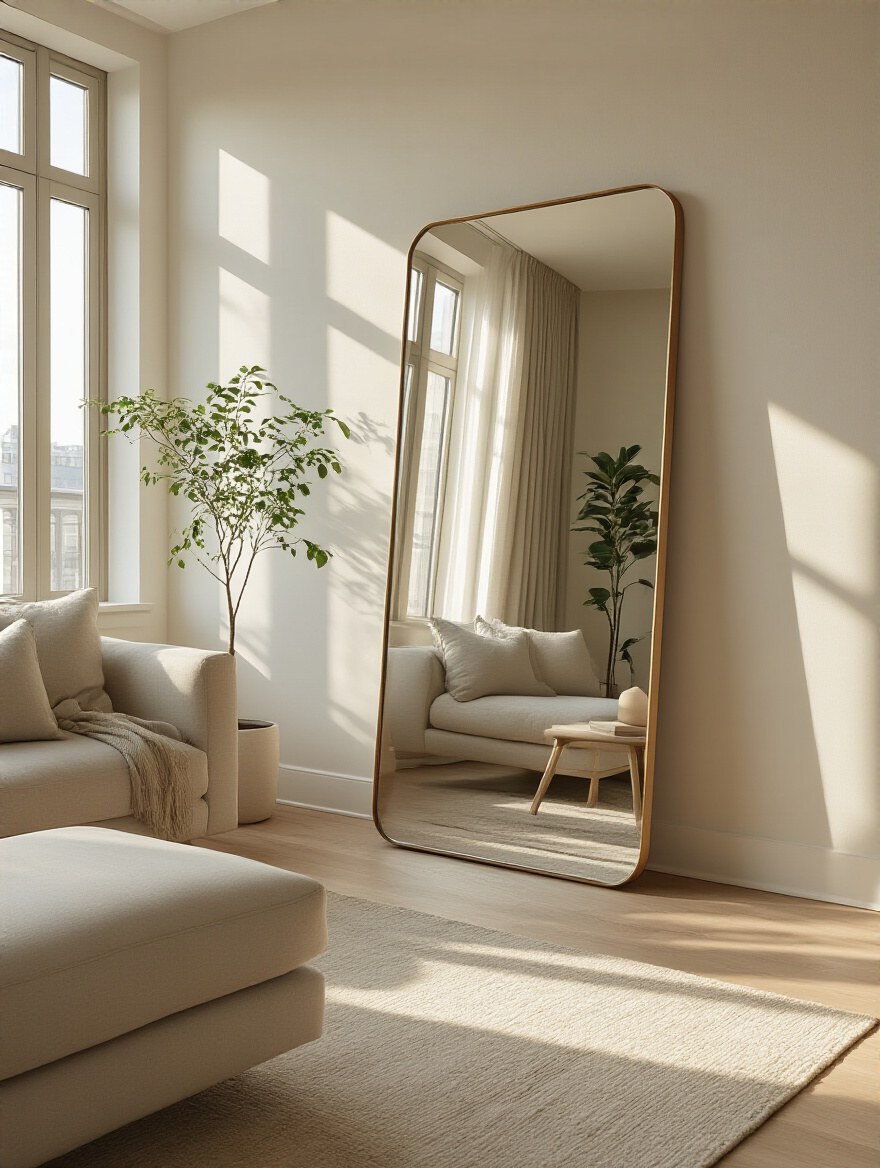
The trick is to be intentional. Think about what you want to see more of. A beautiful piece of art? The flickering flame of a candle? The view outside? That’s what your mirror should face. A large, floor-length mirror leaned against a wall can have a massive impact, creating incredible depth and a casual, sophisticated vibe. Don’t be afraid to go big! A larger mirror will make a much more significant statement than a cluster of small ones.
Used thoughtfully, a mirror is one of the most powerful tools in your decorating arsenal, capable of transforming a dark, cramped room into one that feels bright and expansive.
Personalized Touches: Elevating Your Apartment’s Ambiance (Part 1)
This is my favorite part! This is where we stop just decorating and start storytelling. A home without personal touches is just a showroom. Infusing your personality, your memories, and the things you love is what turns four walls into a true sanctuary.
13. Infuse Personality with Art, Photography, and Unique Decor Accents
Your walls should not look like a generic hotel room. They are the biggest canvas you have to express who you are! And you absolutely do not need to spend a fortune to have meaningful art. Frame a beautiful piece of fabric, a vintage postcard, your child’s finger painting, or a collection of your own travel photos. A gallery wall is a fantastic way to display a collection of smaller pieces and make a huge statement.
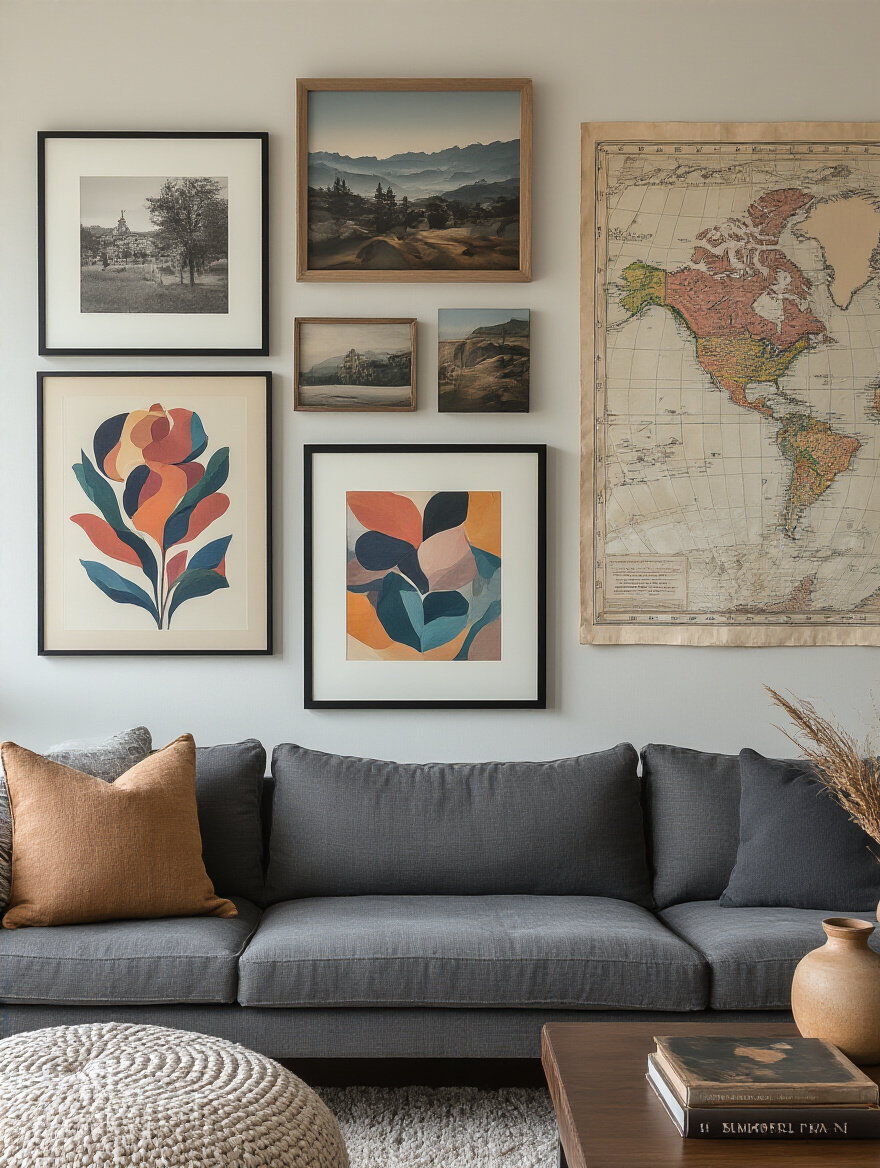
The secret to a great gallery wall is to lay it all out on the floor first. Play with the arrangement until it feels balanced before you put a single nail in the wall. And for my fellow renters, Command Picture Hanging Strips are your best friends. They let you create the gallery wall of your dreams without sacrificing your security deposit. The goal is to surround yourself with images and objects that make you smile and tell your unique story.
Don’t just fill your walls—curate them. Let them be a reflection of your adventures, your loves, and your passions.
14. Incorporate Soft Furnishings: Blankets, Pillows, and Drapes for Coziness
This is the easiest, fastest, and most affordable way to change the entire mood of your room. I think of soft furnishings—pillows, blankets, and drapes—as the wardrobe for your home. Just like you swap out sweaters for sundresses, you can swap out your textiles to celebrate the seasons. A pile of velvet and faux fur pillows in deep jewel tones makes a room feel instantly cozy for fall and winter. In the spring, swap them for light linen or cotton covers in breezy pastels.
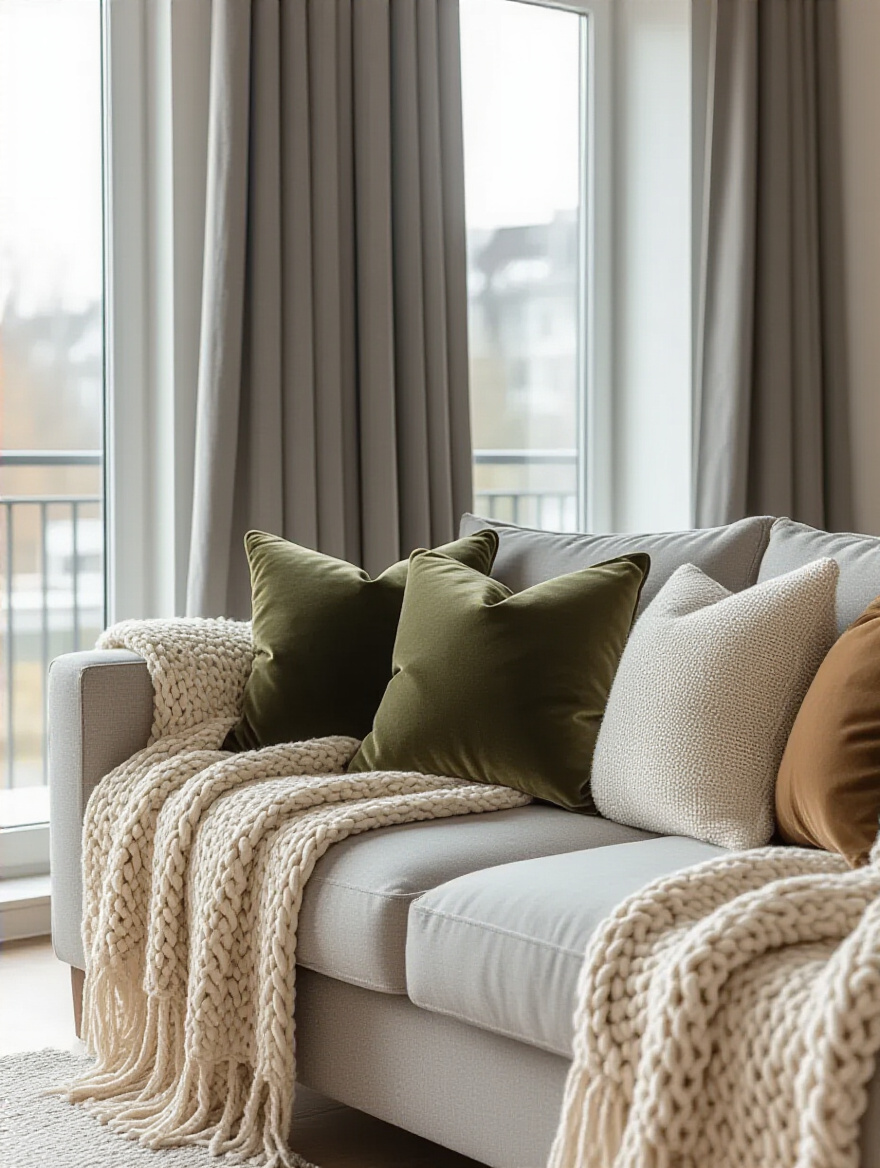
Texture is your secret weapon here. Mixing different materials—a chunky knit throw, a smooth silk pillow, a nubby linen curtain—adds so much depth and visual interest, making the room feel layered and luxurious. And a quick tip on drapes: always hang them high and wide. Mounting the curtain rod several inches above and beyond the window frame makes your windows look so much larger and grander. It’s a simple illusion that has a massive impact.
Playing with textiles is your chance to be a seasonal stylist for your own home, keeping it fresh, inviting, and always in season.
15. Introduce Greenery: Plants for Freshness, Life, and Air Quality
Nothing brings a room to life quite like a living, breathing plant. They add color, organic texture, and a connection to the natural world that is so vital, especially in a city apartment. Plants literally breathe life into a space, purifying the air and bringing a sense of calm and vitality. I used to think I had a black thumb, but the secret is just finding the right plant for your light conditions. There is a plant out there for everyone, I promise!
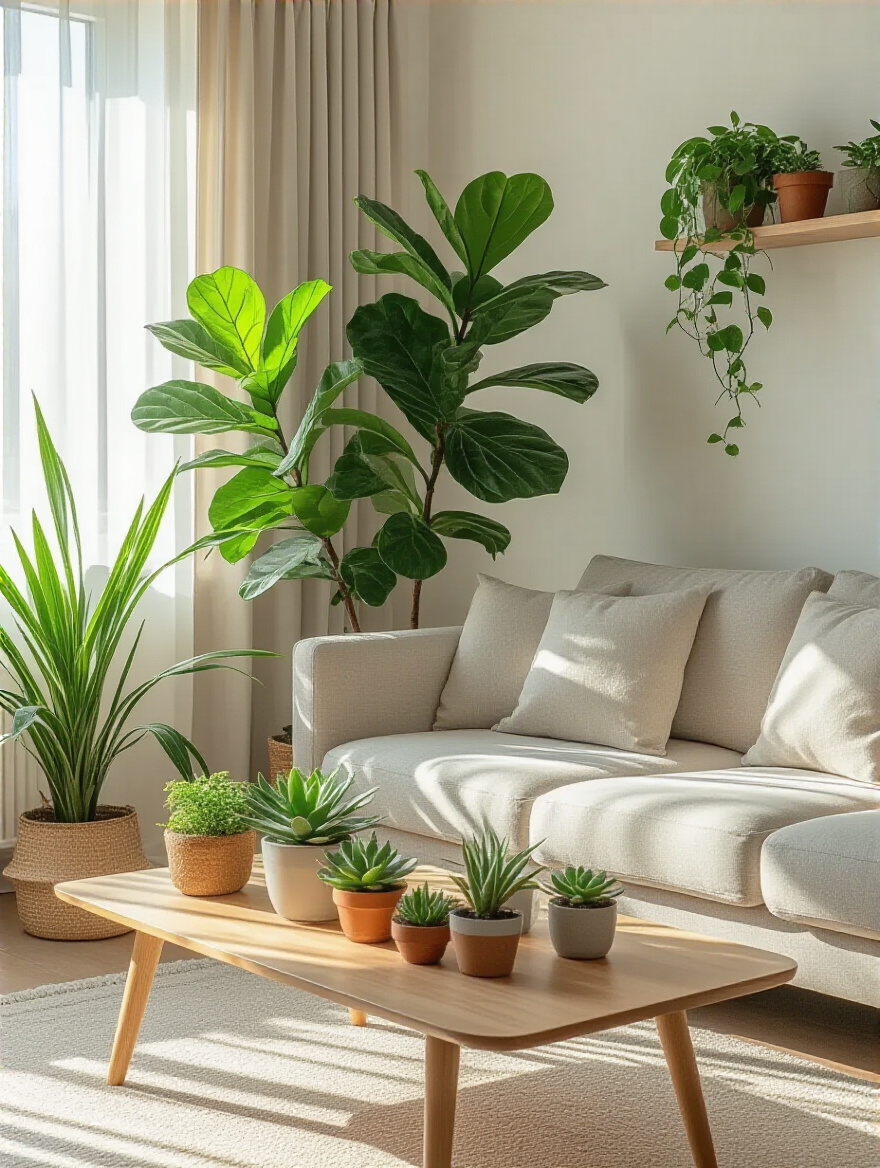
Start with something famously easy, like a snake plant or a pothos. They are incredibly resilient and will forgive you if you forget to water them once in a while. Think about varying heights and shapes. A tall fiddle leaf fig can make a dramatic statement in a corner, while a trailing pothos looks beautiful spilling off a bookshelf. A collection of small succulents on a coffee table tray adds a perfect little pop of green.
Plants are the finishing touch that makes a home feel truly lived-in and loved, connecting your indoor space to the beautiful, ever-changing world outside.
16. Curate a Personal Story with Thoughtfully Displayed Collected Items and Souvenirs
Stop hiding your treasures! Those shells from your favorite beach vacation, that quirky vase from a flea market, the collection of vintage cameras you inherited from your grandpa—these are the things that hold your memories and tell your story. Don’t shove them in a drawer. The trick is to display them with intention so they look like a curated collection, not random clutter.
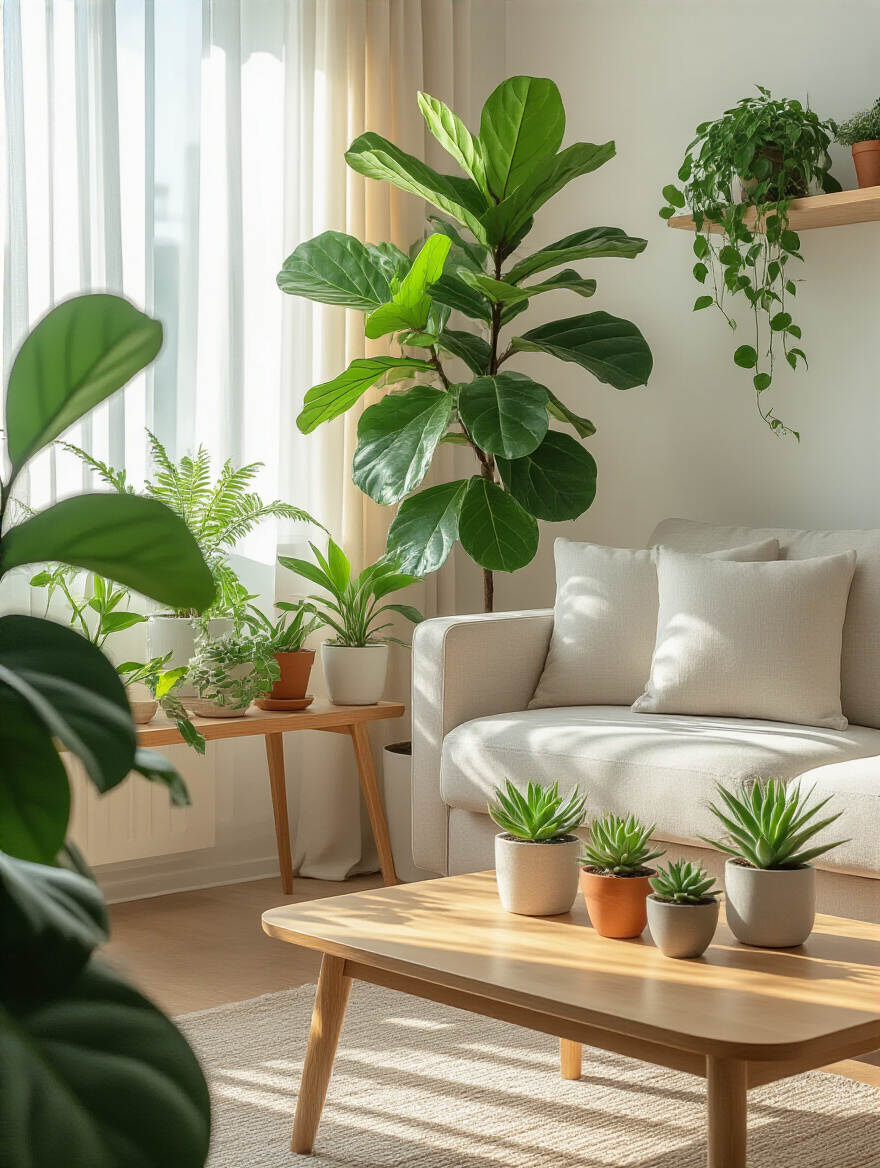
Group similar items together to make a bigger impact. A collection of three vintage bottles looks much more purposeful than one sitting by itself. Use trays to corral smaller items on a coffee table, creating a contained and stylish vignette. Create little “moments” on your bookshelves, mixing books with objects, and varying the height and texture. A stack of books lying horizontally can act as a pedestal for a favorite object. This is about editing and arranging, turning your possessions into a beautiful, visual autobiography.
“Effective display isn’t about showing off, but creating an intimate narrative that feels uniquely yours.”
Your home should be a gallery of your life’s adventures. By curating your favorite things, you create a space that is not only beautiful but also deeply meaningful.
Personalized Touches: Elevating Your Apartment’s Ambiance (Part 2)
We’re in the home stretch! These last two points are about the ongoing care and keeping of your beautiful space. Think of this as the maintenance that keeps the magic alive, ensuring your home continues to be a source of joy and not a source of stress.
17. Organize Smartly: Utilize Decorative Trays, Baskets, and Containers
Trays are magic wands for clutter. Seriously. A coffee table covered in remotes, coasters, a candle, and a book looks messy. But put those exact same items on a beautiful tray, and suddenly it looks like a chic, intentional arrangement. Trays create visual boundaries, tricking our brains into seeing one single, organized unit instead of a dozen scattered items. Use them on ottomans, side tables, and entry consoles to instantly bring order to chaos.
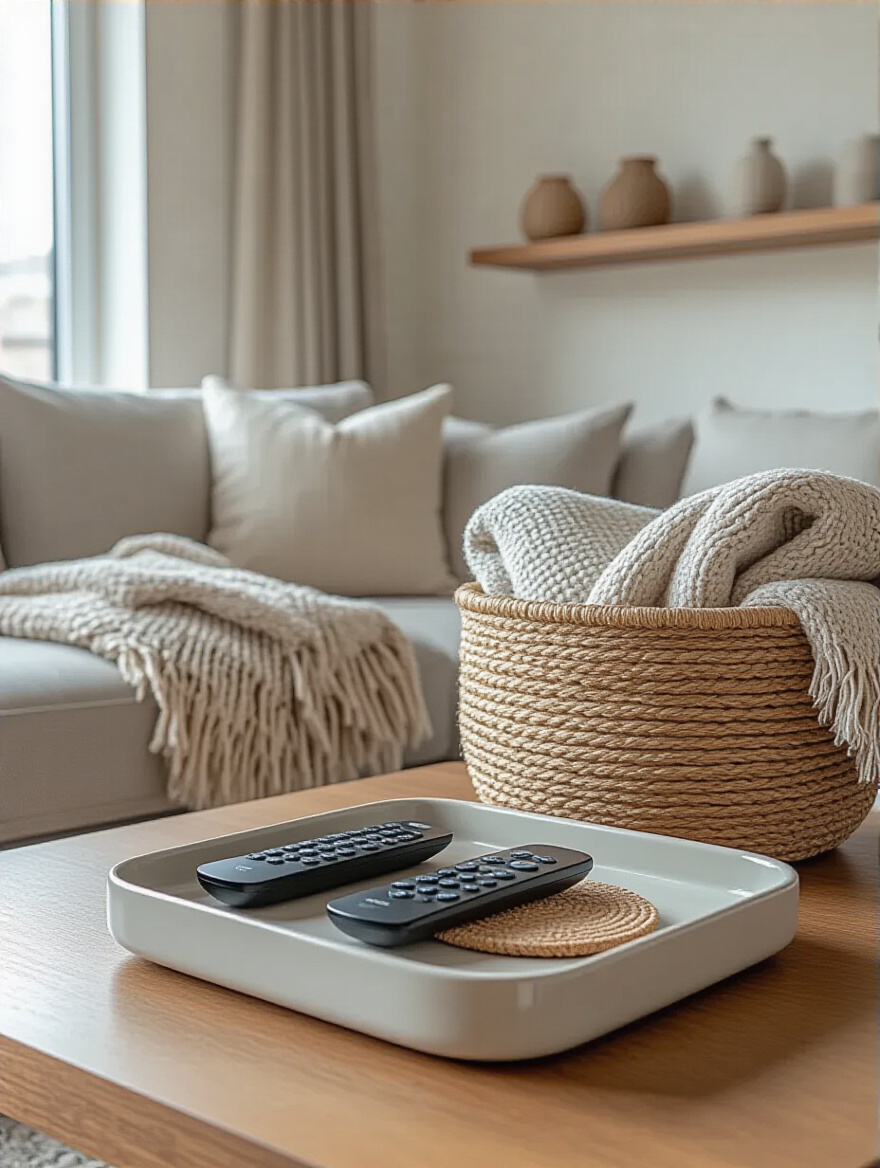
Baskets are another superhero of stylish organization. A large woven basket next to the sofa is the perfect home for extra throw blankets or your laptop at the end of the day. A set of small baskets on a bookshelf can hide away all the unsightly cords and chargers. They add wonderful texture to the room while performing the very important job of hiding the necessary but not-so-pretty parts of daily life.
By using beautiful containers, organization becomes part of your decor, seamlessly blending function with your personal style.
18. Review and Refine: Periodically Declutter and Refresh Your Space
The most important thing I can tell you is this: your home is never “done.” It is a living, evolving space that should grow and change with you. What worked for you last year might not work for you this year, and that’s okay! Set a date on your calendar once a season to do a quick review. Does the layout still work? Are there things that have migrated to the living room that belong somewhere else? Are you still in love with all your pillows?
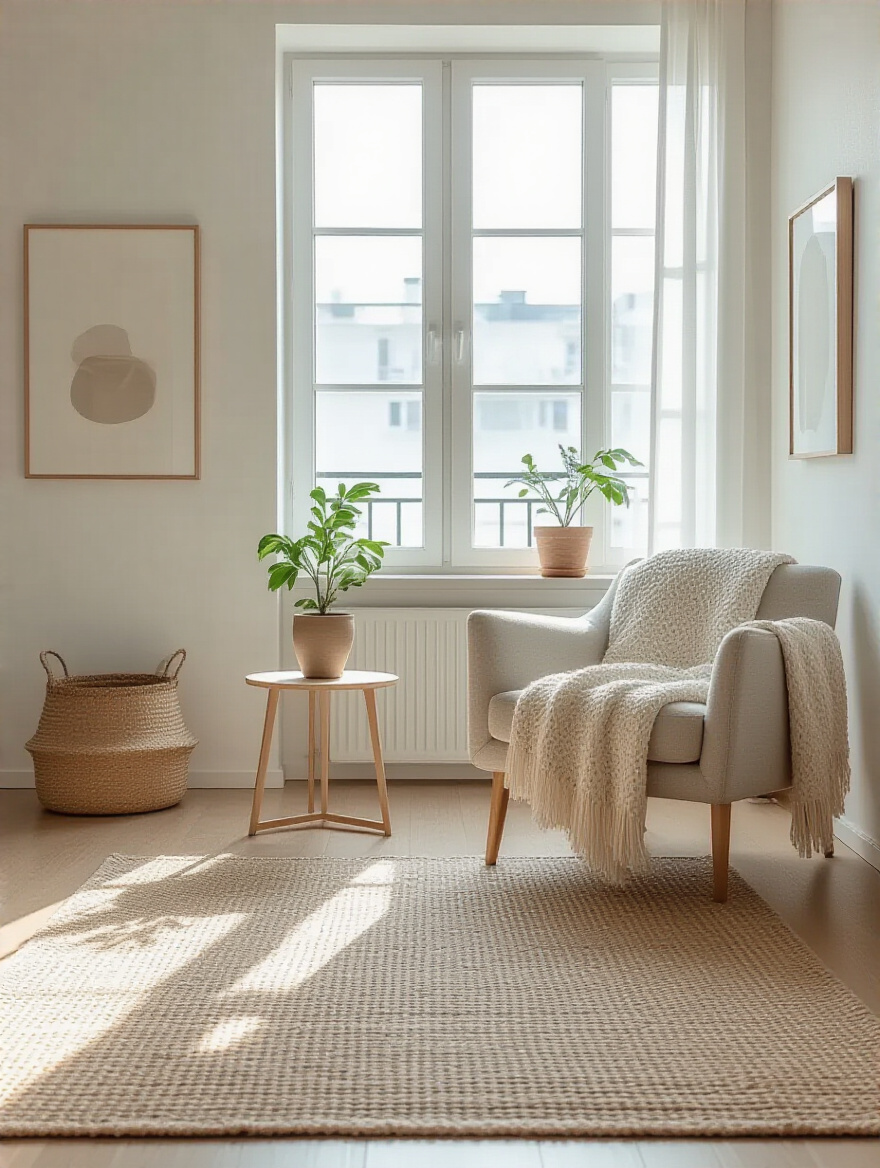
This isn’t about a massive, stressful overhaul. It’s a gentle refresh. Maybe you rotate the art from your bedroom, rearrange the objects on your bookcase, or implement a “one in, one out” rule for decor. This is your chance to reconnect with your space, tweak what isn’t working, and keep it feeling fresh and aligned with who you are now. I love doing this with a glass of wine and some good music on a Sunday afternoon. It feels like a celebratory ritual, not a chore.
By periodically tuning into your home, you ensure it remains a supportive, inspiring, and beautiful reflection of your life’s journey.
Conclusion
So there you have it. Your apartment isn’t a waiting room for a “real” house; it’s the main stage for your life right now, and it deserves to feel spectacular. Decorating isn’t about following a rigid set of rules or spending a fortune. It’s about being clever, getting personal, and having fun creating a space that makes you happy every single time you walk through the door. Pick one idea from this list that gets you excited and just start there. Maybe it’s finding the perfect, oversized rug or starting a plant collection. The journey of creating a home you love is a joyful one, made up of many small, wonderful moments. Your living room is a canvas—go make some magic.
